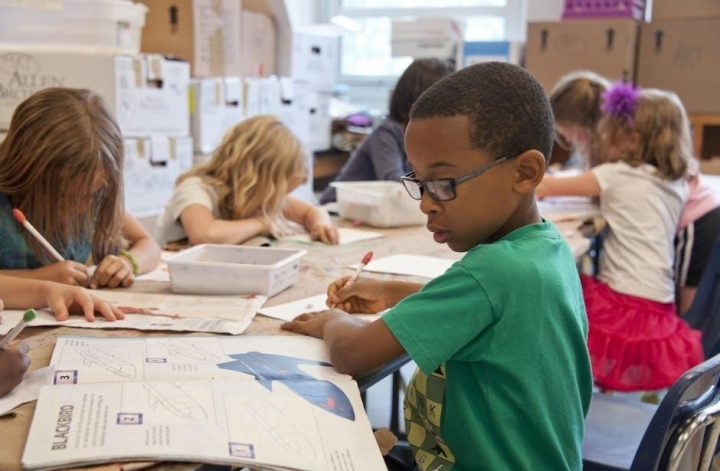Get to know you activities are engaging exercises designed to foster interaction and connection among students. They help break the ice, encouraging participation and collaboration while creating a welcoming classroom environment that promotes social learning and teamwork.
Definition and Purpose
Get to know you activities are structured exercises aimed at helping students establish connections and build rapport with one another. These activities are designed to foster meaningful interactions, reduce shyness, and create a positive classroom atmosphere. Their primary purpose is to encourage collaboration, communication, and mutual understanding among students, laying the foundation for a supportive learning environment. By engaging in these activities, students can develop essential social skills, build trust, and feel more comfortable sharing ideas and working together. Ultimately, these exercises play a vital role in promoting inclusivity and teamwork, making them a cornerstone of effective classroom management and student engagement.
Importance in Educational Settings
Get to know you activities hold significant value in educational settings as they foster connections and create a positive classroom environment. These activities help students feel comfortable, reducing shyness and anxiety while encouraging participation. They promote collaboration, empathy, and mutual respect among diverse groups, enhancing overall social dynamics. By breaking down barriers, these exercises enable students to engage more freely, leading to improved focus and academic performance. Educators benefit as well, as these activities provide insights into students’ personalities and strengths, aiding in tailored instruction. Ultimately, they lay the groundwork for a supportive, inclusive learning space that nurtures both social and academic growth.
How These Activities Foster Engagement
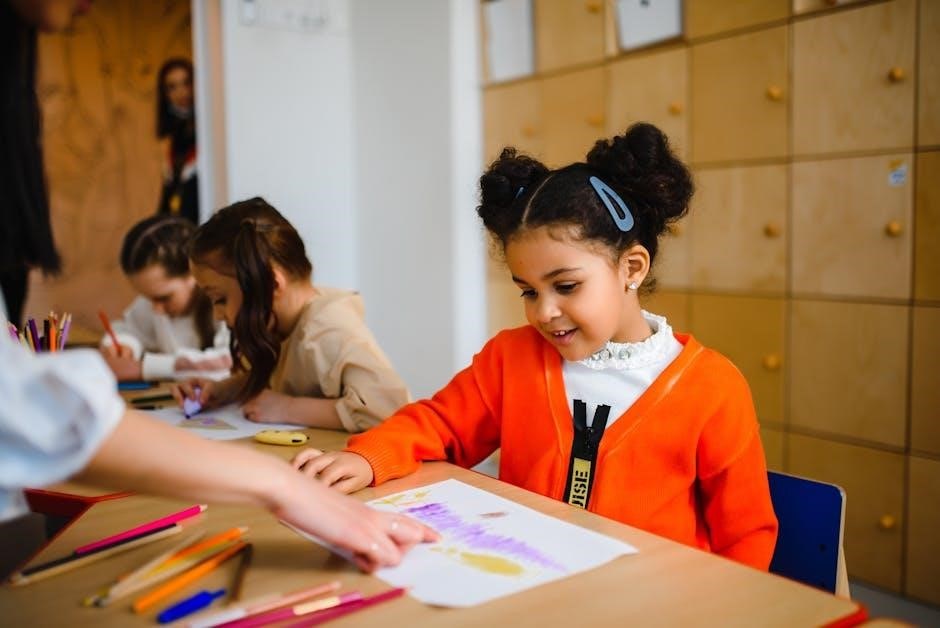
Get to know you activities foster engagement by creating opportunities for students to interact meaningfully with peers. These exercises break down social barriers, encouraging students to communicate openly and collaborate. By participating in shared experiences, students develop a sense of connection, which enhances their willingness to engage in classroom discussions and group work. Active participation in these activities helps students feel valued and heard, increasing their motivation to contribute. Moreover, these interactions create a dynamic learning environment where students are more likely to take risks, share ideas, and build relationships, ultimately leading to higher levels of engagement and collaboration in academic settings.
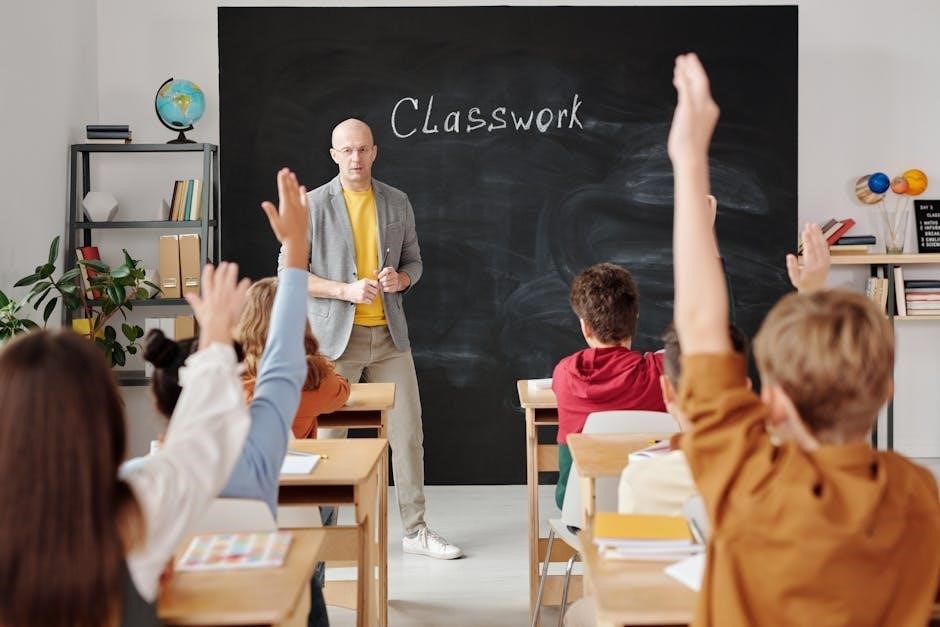
Types of Get to Know You Activities
These activities include icebreakers, team-building exercises, group discussions, creative expressions, and physical movements. Each type is designed to encourage interaction, collaboration, and connection among students effectively.
Icebreaker Games
Icebreaker games are fun, interactive activities designed to help students feel comfortable and build connections. Examples include “Two Truths and a Lie” and “Human Bingo,” which encourage sharing and laughter. These games are perfect for the start of a new academic year or when forming groups. They foster a relaxed atmosphere, reducing shyness and anxiety while promoting teamwork and communication. Icebreakers are simple yet effective tools for creating a positive classroom environment, ensuring students feel valued and included from the beginning. They set the stage for collaborative learning and lasting relationships among peers.
Team-Building Exercises
Team-building exercises are activities designed to strengthen collaboration and trust among students. Examples include group challenges, scavenger hunts, and problem-solving tasks that require teamwork. These exercises help students learn to rely on one another, value diverse perspectives, and develop essential collaboration skills. By fostering a sense of unity and shared goals, team-building activities create a supportive environment where students feel motivated to contribute and grow together. They also encourage active listening, conflict resolution, and mutual respect, preparing students for future group work and real-world challenges. These exercises are particularly effective in helping students build lasting relationships and a strong sense of camaraderie.
Interactive Group Discussions
Interactive group discussions are structured activities that encourage students to engage in meaningful conversations. These discussions are designed to foster active listening, critical thinking, and collaboration. They often involve guided conversations on specific topics, such as shared interests, experiences, or current events, allowing students to express their thoughts and opinions. Activities like think-pair-share or open forums can be used to facilitate participation. By engaging in these discussions, students build confidence in expressing themselves, develop empathy by understanding others’ perspectives, and enhance their communication skills. These interactions create a supportive environment where students can connect, share ideas, and learn from one another.
Creative Expression Activities
Creative expression activities are innovative ways for students to connect through art, music, and storytelling. These activities encourage students to share their thoughts and feelings in non-traditional ways. For example, students can create collaborative murals, write group poems, or compose songs that reflect their shared experiences. Personalized projects, such as “About Me” collages or “My Story” journals, allow students to express their individuality while fostering mutual understanding. Drama-based exercises, like role-playing or skits, also help students bond by stepping into each other’s shoes. These activities not only build confidence but also provide an outlet for students to overcome shyness and connect on a deeper level.
Physical and Movement-Based Activities
Physical and movement-based activities are dynamic ways to help students connect through action and play. Games like “Simon Says” or “Follow the Leader” encourage active participation and laughter, breaking the ice effortlessly. Team sports, such as relay races or capture the flag, promote collaboration and problem-solving. Movement-based icebreakers, like group dances or scavenger hunts, allow students to express themselves freely while interacting with peers. These activities not only foster physical engagement but also help students develop teamwork and communication skills. By moving together, students build connections and create shared experiences, making it easier to transition into more structured learning environments.
Digital and Online Icebreakers
Digital and online icebreakers are excellent for fostering connections in virtual classrooms or remote settings. Activities like virtual scavenger hunts, online quizzes, and collaborative document sharing encourage interaction and engagement. Tools such as Kahoot, Mentimeter, and Google Jamboard facilitate these activities, making them accessible and fun. For instance, a virtual “Two Truths and a Lie” game can be conducted via chat or video breakout rooms, allowing students to share and guess. These icebreakers cater to diverse learning needs and preferences, helping shy students participate comfortably. They also promote inclusivity and collaboration, essential for building a cohesive online learning community. Adaptability and clear instructions ensure effectiveness in various class sizes and time frames.
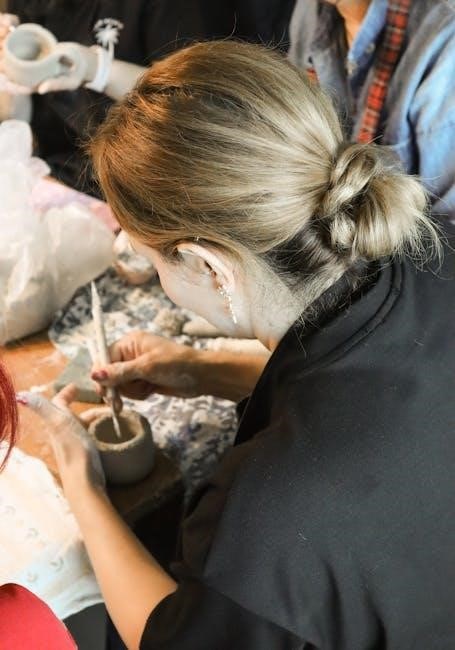
Benefits of Get to Know You Activities
Improved classroom dynamics, enhanced student participation, and development of social skills are key benefits. These activities foster inclusivity, reduce shyness, and create a positive learning environment, promoting academic success.
Improved Classroom Dynamics
Improved classroom dynamics are a direct result of get-to-know-you activities, fostering a sense of community and collaboration among students. These activities help students feel more connected, reducing social barriers and encouraging open communication. When students feel comfortable with their peers, they are more likely to engage actively in group work, share ideas, and support one another. This leads to a more positive and inclusive classroom environment, where respect and empathy are prioritized; Teachers also benefit, as stronger student relationships can enhance overall classroom management and create a space where learning thrives. Such dynamics lay the foundation for a successful academic year.
Enhanced Student Participation
Enhanced student participation is a significant outcome of get-to-know-you activities, as they create an environment where students feel comfortable contributing. When students are familiar with their peers, they are more willing to share ideas, ask questions, and engage in discussions. These activities break down hesitations and encourage even the quieter students to voice their thoughts. Increased participation fosters a sense of ownership and accountability, leading to more collaborative and interactive learning experiences. By building connections early, teachers can create a classroom culture where every student feels valued and motivated to take part actively in lessons and activities throughout the year.
Development of Social Skills
Get-to-know-you activities play a crucial role in fostering essential social skills among students. These activities encourage communication, active listening, and collaboration, helping students build meaningful connections. By engaging in group interactions, students learn to express themselves clearly, interpret others’ perspectives, and navigate diverse personalities. These experiences enhance empathy, teamwork, and conflict-resolution abilities. Students also develop confidence in initiating conversations and maintaining relationships. Such skills are vital for creating a harmonious and supportive learning environment, preparing students for lifelong social interactions and future collaborations. Engaging in these activities early helps students cultivate a strong foundation for interpersonal communication and cooperation.
Reducing Shyness and Anxiety
Get-to-know-you activities are powerful tools for reducing shyness and anxiety in students. These activities create a safe and supportive environment where students feel comfortable sharing and interacting with peers. By encouraging gradual participation, such as through sharing exercises or collaborative games, students can overcome their hesitations and build confidence. Activities like group discussions or pair-sharing help students slowly open up, reducing feelings of nervousness. Additionally, these exercises address underlying fears of judgment and foster a sense of belonging. Over time, students become more comfortable expressing themselves, leading to reduced anxiety and a more positive classroom atmosphere.
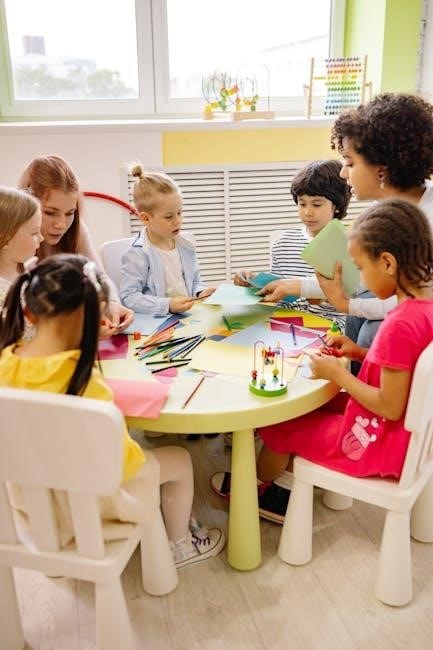
Popular Get to Know You Activities
Popular get-to-know-you activities include Two Truths and a Lie, Human Bingo, The Name Game, and Scavenger Hunts. These engaging exercises foster connection and collaboration among students.
Two Truths and a Lie
Two Truths and a Lie is a fun and engaging activity where students share two true statements and one false statement about themselves. Peers then guess which one is the lie, fostering curiosity and conversation. This game encourages students to think creatively and share personal experiences, helping classmates learn about their interests, hobbies, or unique facts. It’s simple to implement and works well in small or large groups, making it ideal for breaking the ice in classrooms. By promoting active listening and interaction, Two Truths and a Lie helps build connections and establishes a positive classroom environment.
Human Bingo
Human Bingo is an interactive activity where students create bingo cards with different traits, hobbies, or interests in each square. The goal is to find classmates who fit each description and get them to sign the corresponding square. This activity encourages mingling and conversation, helping students discover shared interests and backgrounds. It’s an excellent way to break the ice and build connections in a fun, collaborative manner. Human Bingo fosters a welcoming environment and promotes inclusivity by highlighting diverse experiences. It’s adaptable to various ages and can be tailored to focus on specific themes, making it versatile for different classroom settings.
The Name Game
The Name Game is a classic get-to-know-you activity that helps students learn and remember each other’s names. Each participant introduces themselves and shares a unique fact, hobby, or word that starts with the same letter as their name; For example, “Hi, I’m Sarah, and I love Swimming.” This association makes it easier for others to remember names. The activity fosters engagement, encourages participation, and creates a relaxed atmosphere. It’s simple to implement and works well in both small and large groups, making it a versatile tool for teachers to promote classroom bonding and improve students’ ability to connect with one another.
Scavenger Hunts
Scavenger hunts are interactive and engaging get-to-know-you activities that encourage students to collaborate and interact with one another. These activities typically involve creating a list of items or traits that students must find or identify among their peers. For example, students might search for someone who shares their birthday, has the same favorite color, or can speak more than one language. Scavenger hunts foster teamwork, curiosity, and conversation, making them an effective way to break the ice and build connections. They can be tailored to different age groups and settings, making them a versatile tool for promoting social interaction and camaraderie.
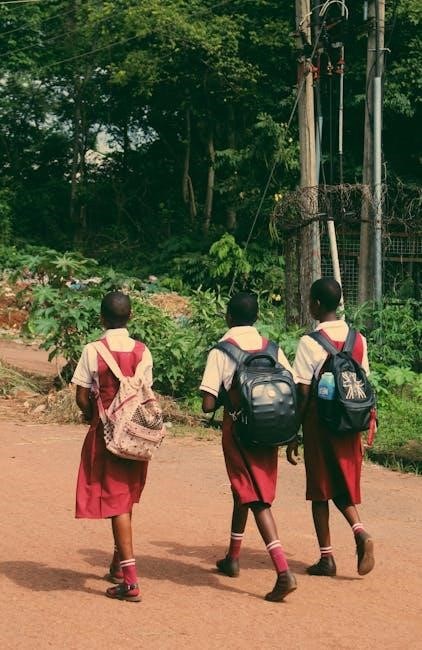
Adapting Activities for Different Age Groups
Adapting get-to-know-you activities ensures they suit varying developmental stages, fostering engagement and inclusivity across different age groups.
Activities for Elementary Students
For elementary students, simple and engaging activities are essential to foster friendships and comfort. Games like “The Name Game” help students learn names through song or rhyme, making it fun and memorable. “Human Bingo” encourages interaction as students find peers with specific traits, promoting inclusivity and movement. “Scavenger Hunts” adapt to include social elements, allowing kids to bond over shared interests. These activities are designed to be short, clear, and inclusive, ensuring all students participate without feeling left out. They also subtly integrate learning, such as nature walks combined with scavenger hunts, while maintaining a safe and respectful environment that encourages kindness and sharing.
Activities for Middle School Students
Middle school students benefit from activities that balance fun with deeper connection-building. Group brainstorming sessions, where students collaborate on creative solutions, encourage teamwork and shared ideas. “The Human Knot” activity, where students must work together to untangle themselves, fosters trust and communication. Role-playing exercises allow students to explore different perspectives, while collaborative art projects like group murals or timelines let them express their identities and interests collectively. These activities are designed to accommodate the energetic and social nature of middle schoolers, helping them build stronger relationships and a sense of community while keeping engagement high. They also promote critical thinking and problem-solving skills.
Activities for High School Students
High school students benefit from activities that challenge them intellectually and foster meaningful connections. Debates on current issues or philosophical questions encourage critical thinking and respectful dialogue. Collaborative projects, such as group presentations or short films, allow students to showcase their creativity while working together. Role-playing scenarios that explore real-world dilemmas help develop empathy and problem-solving skills. Reflective writing or poetry sharing can deepen self-expression and understanding among peers. These activities are designed to cater to the maturity and diversity of high school students, promoting a supportive environment and preparing them for future social and professional interactions. They also enhance collaboration and communication.
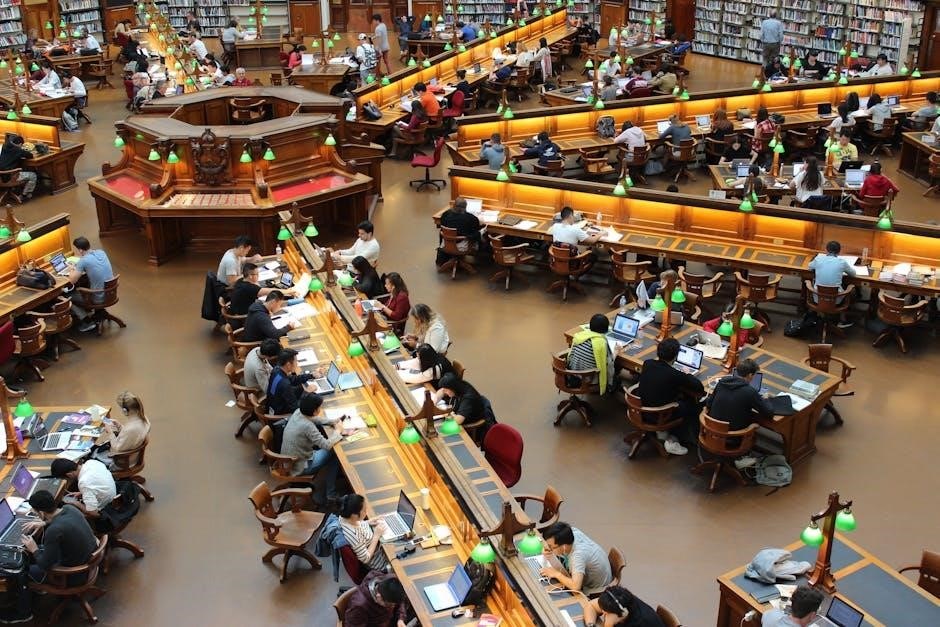
Cultural Sensitivity and Inclusivity
Cultural sensitivity ensures activities respect diverse backgrounds and identities, fostering inclusivity and equity. It involves being mindful of cultural differences to create a welcoming environment.
Ensuring Inclusivity in Activities
Ensuring inclusivity in “get to know you” activities involves creating a welcoming environment for all students, regardless of their cultural background, language, or ability. This can be achieved by adapting activities to accommodate diverse needs, such as providing translation tools or modifying instructions for students with disabilities. Activities should also celebrate students’ identities, fostering cross-cultural understanding and empathy. For example, encouraging students to share aspects of their culture or personal experiences can help break down stereotypes and build connections. Ensuring inclusivity requires careful planning to avoid unintentional bias, making every student feel valued and respected in the classroom setting.
Culturally Responsive Practices
Culturally responsive practices in “get to know you” activities involve integrating students’ diverse backgrounds into the learning environment. This includes incorporating traditions, languages, and perspectives from various cultures to foster mutual respect and understanding. Educators can use activities that encourage students to share aspects of their heritage, such as traditional clothing, music, or food. Additionally, using multilingual resources and ensuring representation in discussions can make all students feel valued. These practices not only celebrate diversity but also promote cross-cultural connections, creating a classroom atmosphere where every student’s identity is acknowledged and respected. This approach strengthens relationships and enhances learning outcomes.
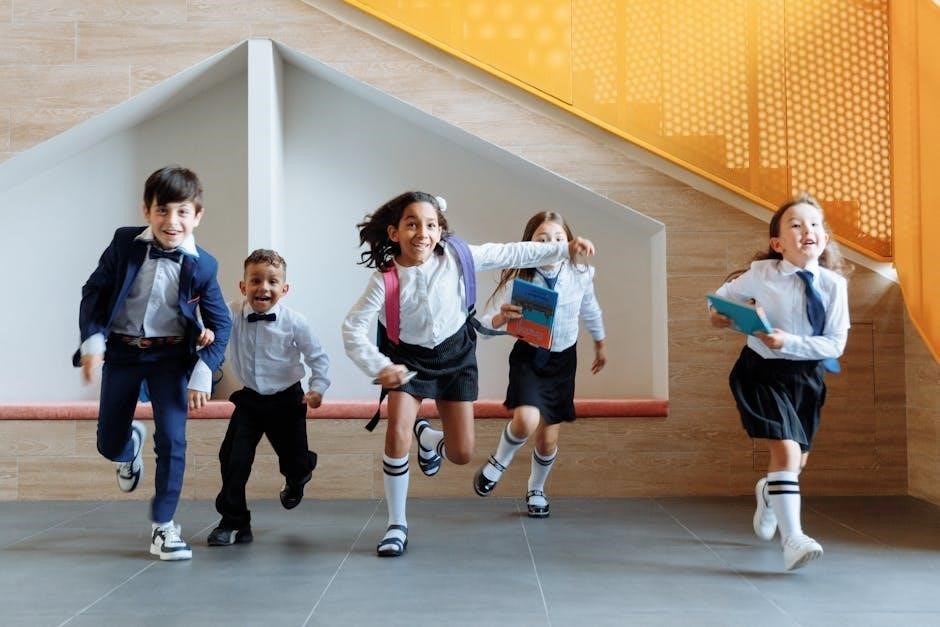
Planning and Facilitating Activities
Effective planning ensures activities align with learning goals, fostering engagement and connection. Facilitators must create a safe, inclusive environment, encouraging participation and meaningful interaction among students.
Setting Clear Objectives
Setting clear objectives is essential for designing effective “get to know you” activities. Objectives should align with educational goals, fostering engagement, encouraging interaction, and building connections among students. Clearly defined aims help guide activity selection, ensuring relevance and focus. By establishing specific outcomes, educators can create a structured environment where students feel comfortable sharing and collaborating. Objectives also provide a roadmap for facilitation, enabling educators to assess activity success and adapt strategies as needed. Whether promoting social skills or reducing shyness, well-defined goals ensure activities remain purposeful and impactful, directly supporting student development and classroom dynamics. Clarity in objectives is key to achieving desired outcomes.
Creating a Safe Environment
Creating a safe environment for “get to know you” activities is crucial to ensure students feel comfortable and secure. This involves fostering a supportive atmosphere where everyone feels valued and respected. Educators should encourage open communication, active listening, and empathy among participants. Establishing clear expectations for behavior and promoting inclusivity helps build trust. By modeling positive interactions and addressing any concerns promptly, teachers can create a space where students feel confident sharing their thoughts and experiences. A safe environment not only enhances participation but also strengthens relationships, making it easier for students to connect on a personal level; This foundation is vital for successful social interactions.
Get to know you activities are essential for building connections and fostering inclusive classrooms. They promote engagement, reduce anxiety, and create a positive learning environment for all students.
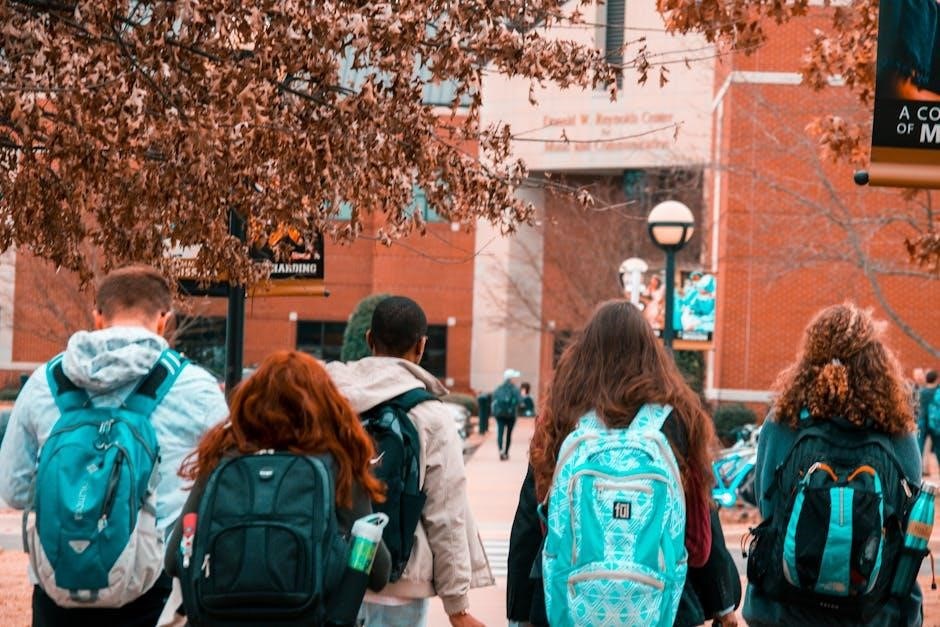
Get to know you activities are vital for fostering connections and creating inclusive learning environments. They help break the ice, build rapport, and encourage collaboration among students. These activities promote engagement, reduce shyness, and enhance social skills. By incorporating icebreakers, team-building exercises, and creative interactions, educators can cater to diverse age groups and learning styles. Adaptability is key, ensuring activities are age-appropriate and culturally sensitive. Effective planning and facilitation are crucial to achieve desired outcomes. Ultimately, these activities lay the foundation for a positive classroom atmosphere, fostering mutual respect and academic success. They are essential tools for educators seeking to create meaningful student interactions.
Final Thoughts on Implementation
Implementing get to know you activities requires intentionality and flexibility. Educators should align these activities with learning objectives while ensuring they meet students’ diverse needs. Start with simple icebreakers to ease students into participation, gradually introducing more complex tasks. Consistency is key; incorporate these activities regularly to build trust and rapport. Be mindful of cultural and personal sensitivities, ensuring all students feel included. Encourage creativity and adapt activities to keep students engaged. By fostering a supportive environment, educators can help students feel valued, promoting a positive classroom culture. Effective implementation enhances social connections and sets the stage for a collaborative learning community.

Additional Resources
Explore PDF guides and online tools offering customizable templates, activity ideas, and expert strategies to enhance your get-to-know-you activities for students of all ages and backgrounds.
Recommended PDF Guides
Discover a variety of free and premium PDF guides tailored for educators, featuring engaging get-to-know-you activities designed for students of all grade levels. These resources often include step-by-step instructions, customizable templates, and creative ideas to foster connection and collaboration in the classroom. Many guides cater to specific age groups, ensuring activities are age-appropriate and impactful. Popular options like “Icebreaker Activities for Students” and “Classroom Team-Building Exercises” provide practical strategies to enhance social interactions. Additionally, some PDFs offer cultural sensitivity tips and inclusive practices, making them ideal for diverse learning environments. Visit educational websites or platforms like Teachers Pay Teachers for these valuable resources.
Online Tools for Activity Planning
Utilize online tools to streamline the planning of get-to-know-you activities for students. Platforms like Google Forms and Kahoot! allow educators to create interactive surveys or quizzes to engage students. Canva offers customizable templates for designing activity sheets or icebreakers. Mentimeter enables live polls and Q&A sessions, fostering participation. Tools like Padlet and Jamboard provide collaborative spaces for brainstorming and sharing ideas. Additionally, SignUpGenius simplifies organizing group activities or volunteer sign-ups. These tools are user-friendly, accessible, and often free, making it easier for teachers to design and implement engaging activities that promote connection and collaboration in the classroom.

